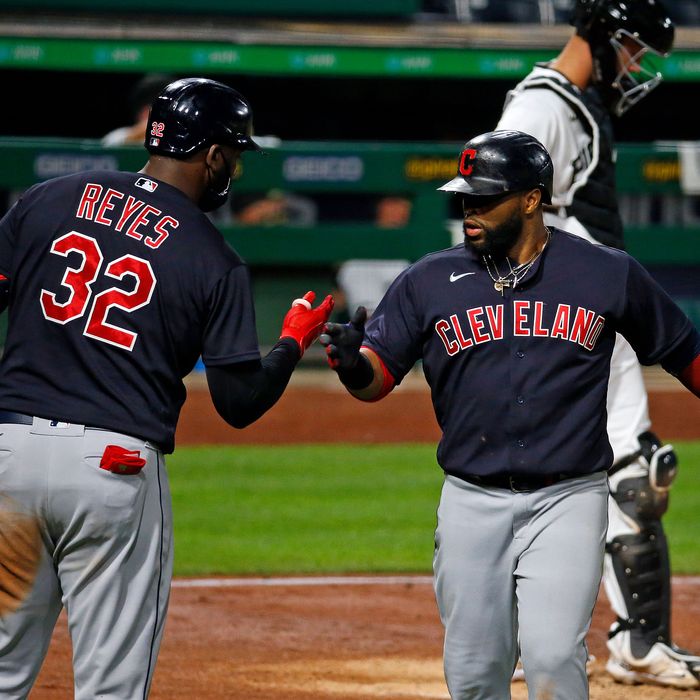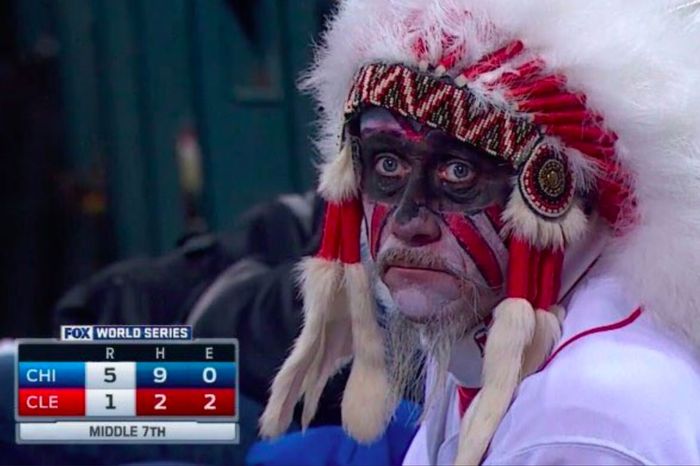
On Monday, after years of escalating pressure, the Cleveland Indians announced that it had decided to change its name. The decision should not have been much of a shock. (Back in July after Washington finally caved to pressure, I wrote for this publication that Cleveland was “almost certain to be next in line” to change its name, and had been moving to do so even before this summer.) Cleveland has slowly been phasing out the moniker — and the infamous grinning caricature that is Chief Wahoo — for several years now. Lately, the team began wearing hats with a simple C on them, and uniforms adorned only with “CLEVELAND” across the chest. And in the wake of the protests over police shootings and racial injustice this summer, the team made it clear that it was aware its name might be part of the problem.
Cleveland had been preparing for this in a way, say, the Washington Football Team had not. It won’t have to execute a radical overnight reshaping of the team brand like Washington did. It won’t even have to change its uniforms: If you were to design a uniform for a team named the Cleveland Baseball Team, this is precisely what it would look like, no?
But that shouldn’t take away from the magnitude of this moment. The Cleveland Indians is one of the signature teams in baseball, one of the eight charter American League franchises (it was known as the Cleveland Lake Shores in 1900). It has a robust and dramatically, gloriously doomed history. It’s the team with the longest World Series title drought and the requisite curses that come with it, the team of Ricky Vaughn and Major League and “Juuuuuust a bit outside.” For it to change its team name, to reverse more than a century of tradition, tradition that’s still ingrained in the city of Cleveland (the team has had a fan pounding a drum every time the team is rallying since 1973), is unquestionably significant.
But you probably shouldn’t be lauding MLB, or the people who run the team, as a hero. The franchise has dug its feet in on the name, and Chief Wahoo, for decades — Native American activist Russell Means brought a lawsuit over the logo way back in 1972 — and current owner Larry Dolan once said, about those protesting the name, “You can whip a group of non-thoughtful people to come up and protest anything” and “I firmly reject that Wahoo is racist. I see that it makes some Natives uncomfortable — clearly not all. I think I understand racism when I see it.” It has only been in the last decade that the team started to reverse itself. In 2014 it began to actively step back from the Chief Wahoo logo, but I’d argue the real pivot point was during the 2016 World Series against the Chicago Cubs, when a record number of television viewers, enticed by the historic matchup between two famously tortured franchises, were constantly greeted with images like this one:
(Donald Trump being elected a week after that series may have accelerated matters as well.)
The point is that Cleveland made this move only under sustained pressure over a matter of decades, pressure that had finally become so intense it couldn’t be ignored. As we congratulate the team for finally doing the right thing — or, more to the point, for finally recognizing that its brand was going to cost it more money than it was going to bring in — let’s remember how long it took to get here. And it’s not like the issue has been entirely laid to rest: When fans are allowed to return to the stadium in Cleveland, many of them will show up in headdresses and war paint; that this hasn’t happened yet in Washington is just a side effect of the pandemic.
The question now is whether the issue will eventually fade away; these battles have a way of sticking around if not handled correctly. My alma mater, the University of Illinois, got rid of its Chief Illiniwek mascot nearly 14 years ago, and it’s still the most hotly debated issue on campus, every year, just as it was when I was in school there. I am fairly certain my funeral, whenever it comes, will feature multiple family members arguing about it.
But the direction sports are going in, from a macro perspective, is clear. Washington was first. Cleveland was second. There are several more teams, particularly the Atlanta Braves (which has also started to buckle a little) and the Chicago Blackhawks, now under even more pressure. It is not inconceivable that in five years, Native American mascots will be out of sports altogether. After decades of battles, the dominoes are falling, and quickly. I have been writing about this issue since my days as a freshman at the University of Illinois, when I was baffled as to why the whooping, hollering fool dancing around in feathers at halftime was played by the blond dude in my Econ 104 class. I have always assumed that, when it came to offensive names and iconography, sports would never catch up with the larger culture: That sports, so steeped in “tradition,” would never budge. I was wrong. Now the two biggest, arguably most offensive names in professional sports have disappeared in five months. You can be skeptical of these teams’ motives. You can be aware that the battle is not over. But that a dam has broken is undeniable. I never thought I’d see the day. Now comes the hard part: Explaining to future generations how we ever let this go on as long as it did in the first place. But at least the last few years of American life have prepared us well for that exercise.
"much" - Google News
December 15, 2020 at 05:13AM
https://ift.tt/3abOaPa
Cleveland’s Baseball Team Shouldn’t Get Too Much Credit - New York Magazine
"much" - Google News
https://ift.tt/37eLLij
Shoes Man Tutorial
Pos News Update
Meme Update
Korean Entertainment News
Japan News Update
Bagikan Berita Ini















0 Response to "Cleveland’s Baseball Team Shouldn’t Get Too Much Credit - New York Magazine"
Post a Comment